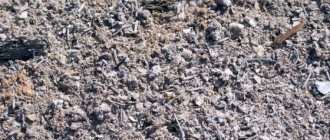Every hamster owner knows that these little creatures are extremely inquisitive and love to hide in the most unexpected and tiny spaces, especially in the dark. In addition, even the most skilled thief will envy the escape skills of these rodents.
It is worth regularly checking cages, balls, and containers for hamsters for strength , because the outside world is extremely dangerous for such a tiny animal. If this fluffy ball was lucky enough to secretly leave its home, then you should immediately begin searching for the fugitive. So, how to find an escaped hamster in an apartment?
Reasons for fleeing
It is common for a small rodent of any breed to escape from its cage, but Djungarian hamsters do this much more often than Syrian ones. This is explained by the fact that dzungarians are more inquisitive and agile. And the cause of such an event can be any factor.
- Cell. If your pet’s house is made of fragile materials, has damaged rods or a weak latch, then the nocturnal resident will easily take advantage of the breakdown or create it himself and get out to freedom.
- Danger. The instinct of self-preservation is developed in every living creature and hamsters are no exception. Did the animal feel unsafe? Escape is inevitable.
- Feeling of fear. Do not forget about the size of the rodent and the fact that such a baby can easily be frightened by loud noises.
- Fatigue. There is no doubt that everyone needs a break. If the hamster is exhausted or has not had enough sleep, it will run away at the slightest opportunity to rest when you take it out of the cage.
- Interest. Even such a small fluffy ball is incredibly curious about the world around him , and he will take measures to escape from “imprisonment” and explore the unexplored corners of your apartment.
- The owner's absent-mindedness. If you pick up a rodent to play with it, it is important to be extremely careful. Otherwise, you will have to look for the escaped fluffy.
How to tame a hamster?
Expulsion method
There are several ways to get rid of hamsters in the country by expelling them:
- The method of flooding burrows is used if all branches extending from the main burrow are blocked. High pressure water is supplied continuously until the animals appear on the surface of the soil.
- Digging holes. This is a labor-intensive method that will require not only physical effort from you, but also patience. Its effectiveness increases if the dug hamster holes are treated with a special pesticide.
- To remove hamsters from your property, you can use another method - expulsion using carbide and smoke bombs. The checkers are placed as deep as possible in the holes and left there for several hours. If you use carbide, you need to take a little substance, put it in a hole and sprinkle it with moistened soil. When exposed to moisture, the toxic substance releases a specific odor. It spreads throughout the hole and thus smokes out the hamster.
- Mouse cats or dogs trained to catch rodents will help catch rodents. But there is one unpleasant moment in this fight - sometimes the pest wins in such a fight.
- An ultrasonic repeller is an effective way to combat wild hamsters in the garden. The device is tuned to a specific frequency. Ultrasonic waves negatively affect the hearing system of rodents, and they are simply forced to crawl out. Such devices operate both on batteries and from the mains. The range is more than eight meters.
What to do if the hamster is not in the cage?
The reactions of owners to the disappearance of a pet are varied. Some people panic, while others are sure that the animal will run up, get some exercise and return to its apartment. Alas, this opinion is extremely erroneous. If you don’t take any action right away, it will harm both your pet and damage your property. Thus, the animal is under the threat of falling into the paws of a cat or dog, it is possible that it will enter a trap from which the animal will not be able to get out on its own, and death from starvation or dehydration should also not be ruled out.
It is important not to forget that a hamster is a rodent that strives to taste everything . This way, the animal can easily chew through the wire and damage furniture and other interior items. What to do if a Djungarian, Syrian or another breed of hamster escapes from its cage? How to find a fluffy?
It is forbidden to panic, because often hamsters are found healthy and unharmed. Some fugitives return within a few hours, while others stretch out the journey over a couple of days.
Make minimal noise and do not make sudden movements. Otherwise, the fluffy little ball will be even more frightened and hide more securely.
Lock the door as soon as you notice that the rodent's cage is empty. This is necessary so that the area where the hamster is hiding becomes safe for him. Don't forget to cover the gaps where your baby can squeeze through.
Inform your family about the fugitive. They will help you in your search, and they will not inadvertently harm a rodent that is hiding in an extremely unexpected place.
Hide other pets further away , because they pose a threat to the fluffy one. It is advisable to lock four-legged animals in another room or in a cage. Start searching immediately.
What should be in a hamster's cage?
Start searching immediately
Don’t expect that the hamster, after walking, will return to the house on its own, leaving you to lock the door. The search must begin immediately after the loss is discovered.
An escaped rodent faces many dangers:
- you risk accidentally stepping on it, injuring it or crushing it to death
- the animal can be injured by falling from a height, or get stuck in some crevice
- larger pets can hunt an animal running around the apartment
In addition, a hamster can chew wires, damage interior items and cause significant damage to your home.
How to track an animal?
First of all, you should start tracking this tiny creature. First, inspect the area near the cage. Fluffy is in no hurry to leave the familiar space and is looking for a secluded place here.
If the fugitive is not near the cage, then it is important to immediately begin inspecting the furniture . Take the time to carefully examine each piece of furniture, look behind it and check underneath it. At the next stage of the search, it is important to examine bags and boxes. Pay attention to your shoes too. It is possible that your favorite hamster is hiding in a dark and warm shoe.
Still, the hamster has not been found yet? Check appliances and electronics for holes. If any are present, do not be lazy to disassemble the device and look for the fugitive there. And most importantly: do not forget that the hamster is a nocturnal animal. Turn off the lights in the room and sit still in the dark for a while and listen. The animal will move, creating a barely audible noise.
Is it possible to feed a hamster bananas?
How to make a hamster detect itself
If you are sure that there are no cracks in the walls and floor coverings, and your pet is relatively safe, it is wiser to build a progressive search strategy. Let's figure out how to make a hamster detect itself:
- You will have to examine the entire room or even several rooms.
- Don't rely on guesswork, hamsters are quite flexible and can fit through even small holes - check everywhere.
- Start your search from the place where you last saw the hamster.
- Inspect the premises several times a day.
- If there is a possibility that a hamster has entered the kitchen, it is necessary to inspect not only the furniture, but also household appliances.
- If there is a closet with clothes in the room in which the hamster is lost, all of it, including bags and shoes, needs to be sorted out.
How to lure out a fugitive?
To the question of how to lure a hamster out if it has escaped from its cage, what exactly to do, there is an extremely simple answer. If you have already determined in which hard-to-reach place the animal is hiding, then place a feeder nearby or sprinkle seeds on the floor . When the fluffy gets hungry, he will independently get out of the shelter to eat.
Should you feed your hamster cheese?
If the whereabouts of the pet are still unknown, then food will also help to catch an escaped hamster in the apartment in this case, as in the previous one. Place a small amount of food on several areas of the floor and “surround” it with flour or starch. A hungry baby will soon find food and get its paws dirty. Then, in hot pursuit, you can easily find out in which direction the furry traveler disappeared.
If you don’t want to litter your room, you can make an imaginary bowl out of foil and pour the animal’s favorite treat into it. Leave the homemade plate on the floor. When the hamster comes to eat, the meal will not pass silently.
We lure the animal out correctly
It happens that the hamster cannot be detected after inspecting the room several times. In this case, the pet's attention will have to be attracted with treats.
We lure the animal correctly:
- Choose flavorful treats that your pet likes best.
- Place treats along the walls because this is how a scared hamster moves.
- Be sure to place several shallow drinkers along the walls!
After placing treats, check them every hour. As the treats disappear, you will be able to figure out which part of the room your hamster is hiding in.
Tip: if you were unable to locate the fugitive during the day, be sure to leave several bowls of water and food overnight. Bowls should be placed closer to walls or corners of the room, under furniture or in other likely hiding places.
How to catch an escaped animal in an apartment?
When the baby is discovered and lured out of its hiding place, it is time for capture. A waffle towel should be thrown over a hamster tempted by food . This way the animal’s movements will be limited, and you can easily catch it.
If the agile fluffy doesn’t want to leave the shelter, then place a cage with an open door near the entrance to the shelter. A hungry rodent will climb into it himself to replenish his strength. It also doesn’t hurt to place your favorite toys and attractions near the hiding place. Soon the baby will want to play and catching him will not be difficult.
Did these actions also not give the desired result? It is worth using traps, which are important to place around the room . Such devices are sold in pet stores or you can easily make them yourself from household items.
Fighting a hamster in a summer cottage
The first and probably the most effective way is a trap. You need to buy special traps and place them throughout your summer cottage. You need to use some kind of treat as bait. There are also cage traps that do not kill the animal, but only close it. But there are several nuances here. You can also lure him there.
Summer residents have already used this method and shared their tips. The main one is to tie the trap to something to secure it. There were cases when the traps set in the evening were no longer there in the morning. The animal hit him, but pulled him along with the bait with him. Therefore, you need to fix it so as not to lose the traps. Still, they are also not cheap. The traps themselves from the dacha can simply be stolen by other people. Therefore, be careful. Sometimes it gets into capnan.
Flooding of holes. If you need to smoke out an animal so that it changes its place of residence, simply fill the hole with water. Be prepared that you will have to fill it a lot, since the hole is deep, has several exits, and some of the water will be absorbed by the ground. But in order to catch the hamster, you need to block all the exits except the one into which we will pour water. Thus, the rodent will have no other choice but near you, and here you will catch it. This should be done during the day, when the animal is at home.
Poison baits also work well. But you need to select them well and give a good dose. These pests are resistant to poison in small doses. Therefore, try to add a serious dose of poison and place the bait around the area. Be careful that the bait is not eaten by pets.
conclusions
There are other ways to deal with hamsters in the country, but they are not very effective. In any case, beware of them. These are dangerous rodents that can harm not only the garden, but also humans. Even if caught in a trap, he is still dangerous and will jump on you.
Hamster trap:
Pest trapping process:
1. And in the city, dozens of hungry cats, trained on rats and dogs, are looking in vain for food... (cats don’t eat carrots and cabbage)
2. If it is known that this is a hamster, then it has been seen... Like in the song, “I’ll go out into the field at night with a gun...” 
3.Next year, plant even more cabbage and beets, don’t let the filthy hamster choke :)
Food for thought...
“Over the summer, the female brings up to three litters, each of which contains 8-12 and even up to 20 cubs. Pregnancy lasts about 23 days. The animals are practically omnivores, although they prefer grain feed and root crops.”
“Adult animals, even those raised by people from an early age, become very vicious. They are active at dusk and at night, so it is difficult to observe them. The excretions of these large hamsters are quite copious and odorous.”
“In the end we had to get serious about catching the night robber. Twice it was covered by an improvised plane from a guarded plywood box, but each time the animal got away from under it, not forgetting to drag away the bait. The fugitive was caught only when the light plywood trap was replaced by a heavy box made of boards, which the hamster was no longer able to lift..."
Story from the internet: On topic
So…. Recently I stopped by to visit my old friend Vasya. Vasya lived in a village, not far from the city, and owned a small workshop for repairing various household appliances and a vegetable garden. Lately, Vasya has been obsessed with the idea of fighting mice, which have completely tormented him by making daring raids on storerooms. They ate selected grain, which Vasya saved for making first-class moonshine, very popular among local radio amateurs.
Vasily did not recognize traditional methods of fighting rodents such as mousetraps and cats. “You understand,” he said, beating his chest with his fist, “I am an electronics engineer, an engineer, and I must defeat them with the power of thought.” Sparing no time and effort, Vasya made various devices or, as he called them, mouse bugs, designed to permanently destroy or scare away all the mice in the area. Vasya starved them with ultrasound, which mice allegedly simply cannot tolerate, jammed them with infrasound, from which they were supposed to fall into resonance and die in agony, irradiated them with electromagnetic fields, which, as stated in some article, caused wild allergies in mice, and finally I sprinkled iron filings into the grain and magnetized gray rodents with a powerful solenoid. However, the damned mice, despite all efforts, continued to plunder strategic reserves.
As soon as he saw me, Vasya trumpeted like a spring elk, and without really saying hello, he declared that I was just in time to test the new mouse scarecrow and dragged me to my workshop.
Not even a minute had passed before there was already a jar of the famous moonshine and various village foods on the table. And we, alternately drinking a jar and snacking on small strong cucumbers, began inspecting the device, which consisted of a broken car alarm with an ultrasonic motion sensor. Instead of a siren, a relay was attached to it, which included an ancient reel-to-reel tape recorder and a home-made amplifier with speakers. The tape recorder was supposed to record a cat's meow. Which Vasya suggested doing immediately. He immediately brought one of his cats from somewhere and, poking his muzzle into the microphone, began to scare him and pull his tail, forcing him to meow, however, without any result. In fact, Vasya’s cats are unusually stupid, and besides, he completely spoiled them, indulging them in all their whims. For example, they eat exclusively boiled pollock from the store, sleep on the owner’s pillows, and the rest of the time they get in the way, unsuccessfully begging for something tasty. Naturally, it doesn’t even occur to them to catch dusty mice in barns. In general, the cat did not understand at all what they wanted from him, he just closed his eyes, pressed his ears and carefully tried to bite Vasya’s hand, and then, taking advantage of the opportunity, he ran underground. Vasya gave chase, and soon a roar and screams came from the underground. After some time, Vasily appeared in the workshop, an angry mother-in-law ran after him and set fire to his poor son-in-law. Vasya didn’t catch the cat, but he managed to knock over a tub of cucumbers and step into a bucket of cabbage.
Soon the mother-in-law calmed down and left. “This snake will now be sawing me for a month,” Vasily said sadly, “and they also offended Murzik, he probably won’t come soon.” “And I really wanted to try the mouse scare,” he sighed, sipping from the can. And then a brilliant idea came to my mind. - Vasya, to hell with this stupid cat, why don’t we meow ourselves? “Exactly,” Vasya yelled and hit me on the back. Having refreshed ourselves from Vasya's jar, we sat down at the microphone and began to meow and howl like March cats. Soon numerous Vasya’s children came running to us. They apparently thought that we were playing cat house and began to meow in every possible way. By the end, Vasya was so excited that he was growling like a Bengal tiger tearing apart an elephant in the vastness of the Serengeti. The mother-in-law who came to see us just twirled her finger at her temple and, declaring: “They’re completely drunk, they’re singing songs,” she proudly walked away. It was already dark when we mixed the chilling soundtrack, in comparison with which the howl of the Hound of the Baskervilles was just a pitiful squeal, and, having dragged the entire structure into the barn, we disguised it there, since Vasya read somewhere that mice, when they see unfamiliar objects, can become wary and not come. Finally everything was ready, and we fell into the hayloft to sleep. However, Vasya immediately jumped up and ran into the barn. “I added a little volume so we could hear if it worked,” he explained.
I must say that if Vasya’s mouse bugs were somehow not very good, then the amplifiers were what was needed. Vasya didn’t even consider a device that didn’t produce a hundred watts per channel as an amplifier. “On this you can only listen to headphones from the player,” he snorted contemptuously. And then at about six in the morning, when all normal people were sleeping peacefully, the whole area was filled with heartbreaking cat screams. We jumped up like we were scalded. A minute later, everything fell silent, only dogs howled throughout the village, and some kind of soul-piercing squeak came from the barn. Vasya grabbed my hand, his eyes burned with an unquenchable fire. - Do you hear? This is a mouse. Squeaks. Have you seen how she sausages? - and, grabbing a huge shovel, rushed to the barn. Personally, I thought that Vasya’s amplifier was excited due to overload - the sound was too loud and monotonous, however, I ran after Vasya. Like special forces, we burst into the barn, Vasya swung his shovel and... froze in place. The mother-in-law was sitting in the sacks of grain; she no longer squeaked, but only hiccupped and for some reason shook her head finely and tinyly, maybe she was happy about something. Then she saw us. The sight of Vasya from a hangover, and even with a miner's shovel at the ready, makes an indelible impression, and at that moment, somewhere in the bowels of the mouse-scare, a relay clicked, and he produced a new batch of sounds. If it was still somehow bearable on the street, then in the barn it simply filled your ears. Apparently this was too much for the mother-in-law. Having uttered her famous squeak, she scattered us like skittles, knocked down the door and, like an African rhinoceros, breaking currants and trampling the beds, darted straight off somewhere into the forest.
Anticipating a difficult showdown between Vasya and his mother-in-law, I tried not to linger too long and rushed home. However, it later turned out that the mouse bug had a surprising effect on the mother-in-law. She practically never shows up at Vasya’s house, calling him exclusively “You” - Vasily
Petrovich behaves very respectfully with him. Unfortunately, Vasya, in fear of covering his tracks, demagnetized the reel with the recording, not yet knowing about the results of its effect on his mother-in-law, and the priceless recording was forever lost for future generations.
stolen on the Internet
Hamsters in the garden are not the tame, sweet and gentle creatures that children love to breed. In an agricultural pest, the common hamster
(Cricetus cricetus), body length reaches 25-35 cm (tail 2.5-6.5 cm). He digs a hole with many spare and false entrances and exits, in which there is a nest and spacious storerooms, storing in them up to 15 kg of grain and other supplies for the winter (during hibernation, in the middle of winter, hamsters wake up, feed and even appear on the surface without only during thaws, but also at low temperatures down to -20°C). The hamster is omnivorous; its main food is cereals, root vegetables, fruits, but it also eats small animals: earthworms, frogs, lizards, chicks, hares and other rodents. A hamster gives birth to 10-20 babies 2-3 times a year. Hamsters are not afraid of human proximity: they settle in gardens, vegetable gardens and even in residential buildings. When hamsters appear, it is important that “the whole world” regularly exterminates them. Hamsters are distinguished by their evil disposition and aggression - it’s not for nothing that they are called “evil karbysh”; they often even bite each other to death. Sensing danger, the hamster begins to grind and click its teeth, growl dully, and inflate its cheek pouches. Getting even more irritated, the hamster stands on its hind legs and fearlessly rushes at the enemy, no matter what size it is. It’s not so much the hamster’s teeth that are scary, although they leave lacerations on the body, but the fact that hamsters are carriers of about 30 diseases that are deadly to humans and animals. Fleas that live on hamsters and feed on their infected blood also become carriers of these diseases. Therefore, the fight against hamsters is not only a fight for the harvest, but also a fight for health and life. Deforestation allows hamsters to explore more and more new territories: they are able to move long distances, climb obstacles well, swim deftly and jump when necessary. The natural enemies of hamsters are predatory animals and birds, but in the countryside hamsters are safer from them than in an open field. Ratcatcher cats and dogs strangle hamsters, but if cats in the garden cause little damage, then a dog jumping around the beds and flower beds itself looks like a disaster (and not every dog is able to “go” to a hamster; in such fights, hamsters often become winners). The most common way to catch a hamster is to “pouring” it out of its hole with water (if there is enough water) and destroying it. Before pouring water, you must first securely close the other passages from the hole. In the absence of water, hamsters are dug out of their holes with a shovel, but this is very labor-intensive work. Mechanical catching of hamsters is more convenient and simpler; it is carried out using a small arc trap, which is used for catching small fur-bearing animals. A charged trap is placed at the horizontal entrance to the hole, securely attaching it to the ground so that the hamster caught in it does not run away with the trap. There is evidence that the ultrasonic devices created by scientists against rats and mice also repel hamsters. The fight against hamsters in the garden with chemicals (poisoned baits) is carried out as a last resort.
Hamsters in the garden are not the tame, sweet and gentle creatures that children love to breed. In an agricultural pest, the common hamster
(Cricetus cricetus), body length reaches 25-35 cm (tail 2.5-6.5 cm). He digs a hole with many spare and false entrances and exits, in which there is a nest and spacious storerooms, storing in them up to 15 kg of grain and other supplies for the winter (during hibernation, in the middle of winter, hamsters wake up, feed and even appear on the surface without only during thaws, but also at low temperatures down to -20°C). The hamster is omnivorous; its main food is cereals, root vegetables, fruits, but it also eats small animals: earthworms, frogs, lizards, chicks, hares and other rodents. A hamster gives birth to 10-20 babies 2-3 times a year. Hamsters are not afraid of human proximity: they settle in gardens, vegetable gardens and even in residential buildings. When hamsters appear, it is important that the whole world regularly exterminate them. Hamsters are distinguished by their evil disposition and aggression - it’s not for nothing that they are called evil karbysh, they often even bite each other to death. Sensing danger, the hamster begins to grind and click its teeth, growl dully, and inflate its cheek pouches. Getting even more irritated, the hamster stands on its hind legs and fearlessly rushes at the enemy, no matter what size it is. It’s not so much the hamster’s teeth that are scary, although they leave lacerations on the body, but the fact that hamsters are carriers of about 30 diseases that are deadly to humans and animals. Fleas that live on hamsters and feed on their infected blood also become carriers of these diseases. Therefore, the fight against hamsters is not only a fight for the harvest, but also a fight for health and life. Deforestation allows hamsters to explore more and more new territories: they are able to move long distances, climb obstacles well, swim deftly and jump when necessary. The natural enemies of hamsters are predatory animals and birds, but in the countryside hamsters are safer from them than in an open field. Ratcatcher cats and dogs strangle hamsters, but if cats in the garden cause little damage, then a dog jumping around the beds and flower beds itself looks like a disaster (and not every dog is capable of attacking a hamster; in such fights, hamsters often become winners). The most common way to catch a hamster is to pour water out of its hole (if there is plenty of water) and destroy it. Before pouring water, you must first securely close the other passages from the hole. In the absence of water, hamsters are dug out of their holes with a shovel, but this is very labor-intensive work. Mechanical catching of hamsters is more convenient and simpler; it is carried out using a small arc trap, which is used for catching small fur-bearing animals. A charged trap is placed at the horizontal entrance to the hole, securely attaching it to the ground so that the hamster caught in it does not run away with the trap. There is evidence that the ultrasonic devices created by scientists against rats and mice also repel hamsters. The fight against hamsters in the garden with chemicals (poisoned baits) is carried out as a last resort.
All about pests and diseases
on the website Gardenia.ru
If you are truly interested in floriculture, then this message will change a lot in your life!
Now fill out the fields and receive the best free Digest of the Gardenia.ru Site in RuNet “Floriculture: Pleasure and Benefit”
Types of traps
Now let's figure out how to catch a hamster if it has already escaped and cannot be lured out. Don't be afraid of the word "trap". The variations of such a device presented below will not harm the pet, but will only help to catch it.
Bottle
A 2- or 3-liter flat-sided plastic bottle works best for this trap. On three sides you need to carefully cut off the bottom so that it sticks only on the fourth. Bend the dangling plastic and, using a rubber band, secure it in this state. Make a bridge out of cardboard and place it against the bottom edge so that it points inside the trap.
Place a treat on the edge of the device that is in the bottle. The hamster will climb inside and eat, but will not be able to leave the trap.
A tube
This device is perfect for those cases when the fluffy one is hiding under the furniture. You need to take a roll that is left over from toilet paper or paper towels and put a treat for the rodent in it . We seal one of the holes, and with the other side we place the tube near the hamster’s hiding place. A hungry animal will climb into the sleeve for food, and in the meantime you will close the entrance with your palm and move the small tourist back to his apartment.
Bucket
It is important to line the bottom of this vessel with hay or sawdust. This way the animal won’t hurt itself if it falls. Next, cover the bucket with paper and place your baby’s treat on top of it. The next stage is the construction of the “stairs”. You can attach a long ruler to the trap or lay out a ladder from books.
Don't forget to place some goodies at short distances. This will not only attract the rodent's attention, but will also lure him into a trap. Having climbed onto a paper sheet for a treat, the hamster will fall down, and he will not be lucky enough to get out of the bucket on his own.
When should you give your hamster pomegranate?
Where to look?
You can look for an escaped hamster in an apartment anywhere. Tiny animals can hide in the most inaccessible places. If he escaped before your eyes, you should immediately examine the place where he disappeared. If you don’t find the fluffy one, close the entrance door to the room.
But if there are many rooms in the house, the search task becomes much more complicated. After all, each room will now have to be monitored separately. Most often, fugitives do not leave the room where their cage is located, but there are exceptions. So what to do if the hamster runs away, where to look for your pet?
First of all, inspect the following places:
- Cabinets and other furniture. The hamster may hide behind or under the backs of dressers and cabinets. If he escaped in the bedroom, first look under the bed.
- Carpets, rugs. A frightened animal may well crawl under the rug, especially if it does not fit well to the floor. To avoid crushing the crumbs, it is better to remove the rugs.
- Heat and water supply system. Rodents love warm places, so they are able to hide under the sink or near the radiator.
- Pantry. If you have a pantry at home, then this is a paradise for a rodent. It's always quiet there and there's something to eat. If the furry friend settled down there, the search will last for weeks.
Basically, if a hamster runs away, it could be anywhere. But one thing is certain: small rodents do not jump very high, so you should look for the animal in the lower part of the premises.
Preventing escape
To prevent the rodent from leaving the home, all measures should be taken to prevent this incident. First of all, it is worth making the cage as reliable as possible. It is important to check all opening, loose and unstable parts of the house. If there are any flaws, they should be corrected immediately. Don't forget about a strong latch-lock. It is better to exclude a plastic fuse from use and use an iron one. This way the animal won’t harm itself with the plastic if it decides to chew on the lock.
Make sure the rodent's cage is in a quiet and peaceful place. It is better to isolate the baby from noise and human fuss. Otherwise, the fluffy will get scared, and then escape will be inevitable.
Don't forget about the animal's comfort. If a child regularly runs away from his home, then he doesn’t like something there.
You should clean the cage more often, try changing the food or purchasing new toys and attractions. And most importantly: pay attention to your pet .
Alas, it is impossible to completely insure against a hamster escaping from its cage. And if this has already happened, do not panic under any circumstances and do not wait for the fugitive to return on his own. The sooner you start looking for the little traveler, the sooner the baby will be safe .
How to prevent yourself from getting lost again
After you have managed to return your pet to its cage, you need to take care that it does not escape again. Pay special attention to the condition of the cage if this is not the first time the hamster has been lost. Most likely, the pet has already found a way to get out of the cage and will run away at every opportunity.
How to prevent your pet from getting lost again:
- Carefully inspect the cage bars; if any of them are bent, they need to be straightened or covered with plastic.
- Check how firmly the cage closes; the door locks often unbend and become loose.
- If necessary, install an additional latch lock on the cage door.
Note! If your hamster walks around the house in a plastic ball, regularly check how securely it closes! If the door is loose, it can be secured with adhesive tape.











